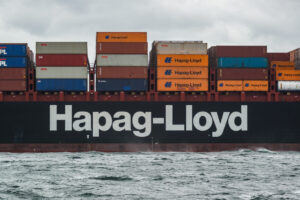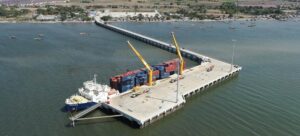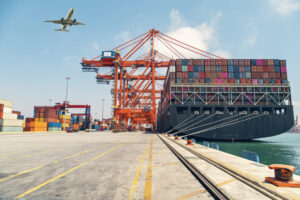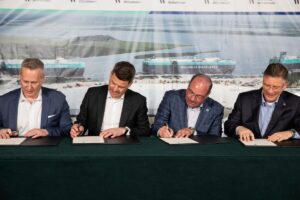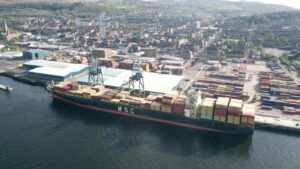At PTI we would like to wish all its American readers and partners a very happy 4th July. To mark the event, we have taken a quick look at the three biggest ports in the US and reviewed their fortunes in 2019.
Port of Los Angeles
The Port of Los Angeles is the biggest and busiest port in the US and has enjoyed a positive first half 2019, which included the announcement by APM Terminals (APMT) at the end of June that its project to automate its operations was not going to stop.
In May it saw its overall throughput increase by 7.8% year-over-year (YoY) as its imports rose by 5.5% and exports decreased by 0.8%.
Before that, the Port enjoyed an exciting start to the year, as it welcomed a SpaceX Capsule which had departed from the International Space Station (ISS).
However, two days later, PTI reported that Elon Musk’s space exploration firm had withdrawn from a deal that meant Mars-bound vessels were built at the Port as it sought to consolidate its manufacturing base in Texas.
Shortly afterward, in late January, it announced that it had broken its cargo-handling record for the third year in a row in 2018, once again confirming its position as a vital container shipping hub for the whole of North America.
In April it unveiled a deal with Toyota, Shell and Kenworth to build the next-generation of zero-emission trucks as part of a wider initiative to pursue an eco-friendly ‘ship-to-shore’ framework.
Port of Long Beach
Long Beach was the stage for one of the biggest stories of the year so far: the sale of the Long Beach Container Terminal
The sale came about because of COSCO’s acquisition of Hong Kong carrier OOCL in mid-2018 and was a condition of US approval.
This news came after Long Beach celebrated a record breaking year in 2018. In the calendar year, its throughput volume reached 8 million TEU for the first time and it responded by announcing a US$1 billion rail improvement scheme to accelerate growth.
While it has faced significant challenges from the US-China trade war, the Port has looked for ways to sustain growth.
One of these was the deal it struck in late-June with FreightTech pioneer NEXT Trucking to ease congestion. As part of the agreement, an 18-acre drayage facility will be built less than 10 miles from the Port.
The Port of Oakland
Oakland received $12.4 million from the California Transportation Commission in June for the implementation of the Freight Intelligent Transportation System, in a move designed to cut traffic and congestion.
That was the latest in a series of announcements in 2019 that have confirmed Oakland’s place as major US-Asia trade gateway.
In January it stated that it was looking to maintain the growth it enjoyed in 2018, despite the hovering clouds of the US-China trade war and other areas of uncertainty for the global economy.
Days later it reported that a record number of ships plugged into the landside electricity grid in 2018 to cut emissions and utilize shore power.
Before January was over, it had also announced the conclusion of its $67 million waterfront expansion and the opening of a new container vessel berth as part of a deal with terminal operator TraPac.
However, in June, its executive director Chris Lytle said the ongoing trade war could pose a serious threat to the US economy following the imposition of then-new tariffs from Donald Trump.
Make sure you continue to tune into PTI for all the latest updates on US ports and terminals and the wider supply chain.
Happy 4th July!





